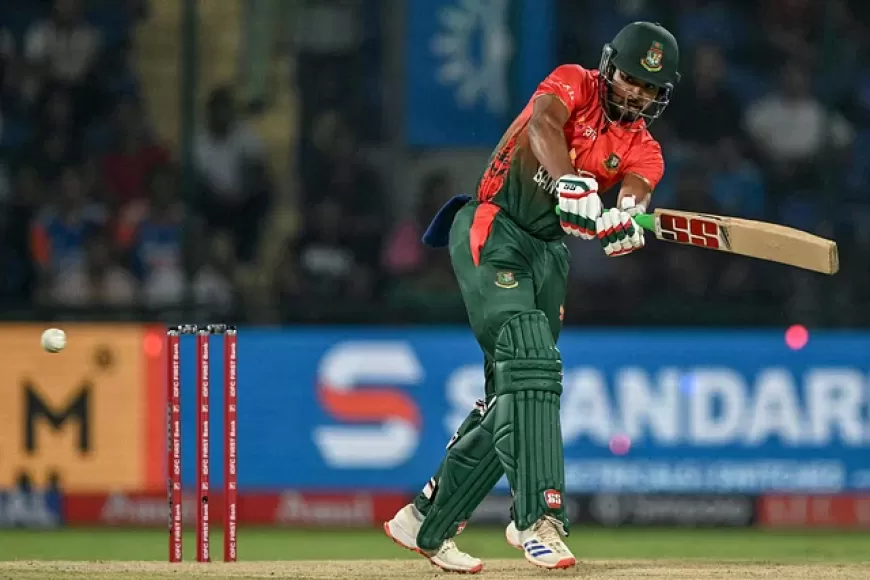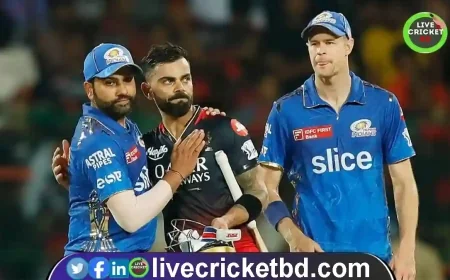Bangladesh's batting style and captains are linked to one formula
last updates: listening to Bangladesh cricket team captain Nazmul Hossain. Nazmul spoke to the broadcaster after the 86-run loss to India in the second T20I in Delhi last nigh

Bangladesh's batting style and captains are linked to one formula
Have to hear the same thing over and over again? Just like seeing almost the same style of batting again and again.
This question may arise after listening to Bangladesh cricket team captain Nazmul Hossain. Nazmul spoke to the broadcaster after the 86-run loss to India in the second T20I in Delhi last night. "We are making the same mistakes (as in the first match)," he said as the reason for the loss. We have to improve.
Nazmul's words are new? probably not Such words can be heard from the mouth of the captain after the match loss of the Bangladesh team in any series or tournament. Mistakes have been made, improvements have to be made or there is room for improvement. But then how much improvement or how much mistakes are corrected? This question can be raised by looking at match after match performance.
In the first two matches of the T20 series, Bangladesh just flew in front of India. The difference is evident in the style of play of the two teams. India plays modern or post-modern T20 cricket. Chasing 127 runs in the first match, they won by 7 wickets with 49 balls in hand. Averaged 11.15 runs per over. Again in the second match the rate of scoring runs is almost the same despite batting first. India averaged 11.05 runs per over en route to 221 for 9 wickets. That is, whenever they come to bat before or after - they are playing T20 cricket like T20. Whether the goal is low or high.
Bangladesh's batting collapsed again while chasing big runs
Can Bangladesh learn from such an example? However, the trend has not changed. Sooner or later—whenever comes into bat, a disaster and then a decent collection of small or medium quality, that's it! After losing 5 wickets for 57 runs in 10 overs in the first match, total runs were 127 runs. Chasing 221 in the second match yesterday, they had to stop at 135 runs for 9 wickets. This time too there is not much difference in batting style. The fifth wicket fell for 80 runs in the 11th over. Then as usual Bangladesh tried to leave the match and play full 20 overs to settle the score and it was successful.
But in two separate matches, in completely different circumstances, the difference in the Bangladesh team's effort graph is just 8 runs—127 to 135. The average runs per over in the first match increased to 6.40, and in the second match it was 6.75. The thing is that no matter the wicket, condition, match situation or the team, Bangladesh team has a traditional style of batting in T20. If that trend seems 'false' looking at the low runs, Bangladesh has not been able to break it yet.
Another example of that trend can be given. Bangladesh has played 178 matches in international T20 so far. Batting first in 85 innings, he averaged 7.39 runs per over. That is, the average score batting first is 147.8. After 92 innings (93 matches) batted at an average of 7.46 runs per over—an average score of 149.2.
What if the calculation is brought down to the last decade? Average score 149.2 batting first in 67 innings in this decade. At the same time the batting average after 67 innings is 150.2. Let's bring the calculation down to the last 5 years. Batting first in 46 innings, the average score is 143.8. And average score 148.4 after batting in 42 innings. If this calculation is further reduced, then what is seen? Let's take a look at Nazmul's captaincy.
Nazmul officially became the captain of Bangladesh in all three editions on February 12 this year. Taking his time into consideration, the batting trend of the last 12 months can be seen. At this time, the average score of Bangladesh batting first in 9 innings is 141. After batting average score 150.2 in 13 innings.
It is noteworthy that the T20 International has passed 19 years, during which all the teams have adapted themselves with the times. Now that T10 has arrived, the batting has become more aggressive. There is nothing to catch up on in 20-over cricket, it's all highlights of the ODI innings. At least that's what it seems from watching the other teams play. Imagine India's batting in the first two matches. That is not necessary either. Look at the batting of the middle-strength teams, and you will see at least the impression of trying to improve.
Only Bangladesh is probably an exception. After two decades, the T20 batting has reached the level, does Bangladesh have any vision? The captain goes, the captain comes, the players are also changed a lot, only the batting style does not change. Whenever he comes in to bat before or later, it is destined to be around 150, especially in the 130-140 range. And looking at that fate, the question arises - the fact that the captains talk about trying to improve so much, take responsibility, are they just a bully to keep the fans calm?
Listen to captain Nazmul's words on the broadcast channel after yesterday's loss, 'I think we made the same mistakes (as in the first match), as a team, which is not good at all. We have to improve...we didn't execute the plan. You have to take responsibility as a batsman. We have to believe in ourselves.
The ears of the fans are rotting to hear such words. Captain Nazmul probably doesn't like making the same promises over and over again or admitting mistakes over and over again. But the style of batting is not changing. After losing the series by 86 runs in Delhi, the third and final match in Hyderabad on Saturday. The question is, is anyone expecting anything exceptional in this match?
Probably not, as cricket is a game of glorious uncertainty. The batting style of Bangladesh and the words of the captains are the holders and bearers of certainty even in the midst of uncertainty
















































